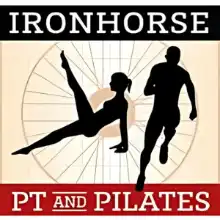
Pilates (pronounced “puh-LAH-tees”) principles and exercises complement physical therapy and are extremely useful for the rehabilitation of injuries. The best person to see if you have injuries and are interested in rehabilitation is a Licensed Physical Therapist who is also a certified pilates instructor!
A regular pilates instructor does not have the years of training in anatomy, physiology, orthopedics and movement disorders. A PT knows how to treat a patient with a spinal fusion, spondylolisthesis, patellofemoral joint disorder, and rotator cuff surgery (yes, we’re talking to you, baseball and softball folks) just to name a few!
Pilates exercises were created by Joseph Pilates in the early 20th century. Pilates was born in Germany in 1883 and was a workout guru before the modern movement truly began. He believed that a healthy mind and a healthy body went hand in hand, and he created a series of exercises – which can be performed on a mat or on a piece of workout equipment called a “reformer” – to help people focus on core muscle movements and further develop them. The reformer machines have pulleys and sleds that are attached to coiled springs of different strengths, offering a subtle form of resistance training. Here’s a look:
 Today, contemporary pilates practitioners have adapted these exercises for rehabilitation and physical therapy. These exercises look at the body as a system, not as an individual part. So doing simple leg raises to solve a knee injury is not the idea; instead, pilates works on several other muscles at once that may be tied into the injury. Victoria, a licensed instructor of these exercises, which are used everyday by world-class athletes, uses pilates as another tool in her toolbox to fix your injury and get you back on track – whether you’re an athlete in training or a weekend warrior.
Today, contemporary pilates practitioners have adapted these exercises for rehabilitation and physical therapy. These exercises look at the body as a system, not as an individual part. So doing simple leg raises to solve a knee injury is not the idea; instead, pilates works on several other muscles at once that may be tied into the injury. Victoria, a licensed instructor of these exercises, which are used everyday by world-class athletes, uses pilates as another tool in her toolbox to fix your injury and get you back on track – whether you’re an athlete in training or a weekend warrior.
This form of treatment isolates certain muscles and “re-educates” your body on its core movement patterns. For example, pilates can facilitate deeper workouts by focusing on abdominal muscles in a way that strengthens your hips. It can even develop better breathing patterns for your training and competitions. Mixing this with the best practices of physical therapy is what makes Ironhorse Physical Therapy unique.

